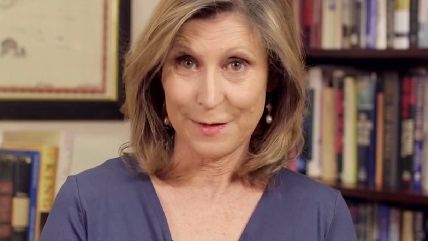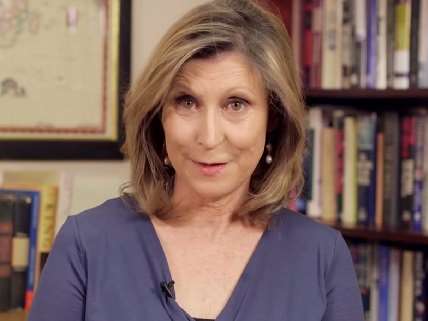Blame Media, Government for Campus Rape Overreach
'Pity, wrath, heroism, filled them, but the power of putting two and two together was annihilated'


The American Enterprise Institute's Christina Hoff Sommers has penned an essential entry in the debate over the scope of campus rape. With painstaking attention to detail, Sommers shows how the 1-in-5 statistic—now believed to be false by a growing chorus of experts—came into existence, and pushes back against the rape accusations made by Laura Dunn* a decade ago, which precipitated the federal intervention that has so irked civil libertarians.
Sommers examines the facts of the Dunn case and finds that they don't square with the narrative:
To wit: When Dunn first spoke to the dean (15 months after the alleged rape), she said that "a portion of the sexual encounter was consensual." (p.5) A few days later when she spoke to a campus police detective, Dunn said twice that she did not remember being raped by one of the men (the one still on campus). She found out about it only when the men told her what happened the next day (p.6). She also told the detective that in the months after the alleged rape that she went—twice—to one of the men's residence, where they engaged in consensual "physical contact."
On one of these occasions both of the alleged assailants were at the apartment and they all watched television together.
The anomalies continue. The NPR/CPI team fault the University of Wisconsin staff for dragging the case out for nine months—enough time for an "enraged encounter" (as related above) between the accuser and one of the accused men. According to the CPI team, when Dunn ran into the young man at a fraternity party, he stalked and threatened her. But Dunn told the police detective that she had initiated the encounter and when he walked away, she followed him into another room because she "knew he wanted to talk to her." She also admitted she had hugged him. No mention of threats. (p. 7).
The young man's version comports with the police report, but he adds that when Dunn approached him, he was alarmed, pulled away, and told her he was afraid she would fabricate more lies. When Dunn started to scream and cry, he fled.
Dunn has become an advocate for sexual assault victims, and was quoted in the infamous Rolling Stone article about a gang rape at the University of Virginia. While the discrepancies in Dunn's account don't rise to the level of UVA's Jackie, there is more than enough evidence to suggest that the central case at the heart of the Office for Civil Rights' anti-due-process crusade was much more complicated than the narrative suggested.
Sommers' bomb-throwing videos for AEI's "Factual Feminist" have made her a favorite punching bag of leftist-feminists who accuse her of rape denial. But honest critics will have a difficult time arguing with her impeccably researched Daily Beast piece. She even works in a quote from E.M. Forster's 1924 novel A Passage to India, which concerns a false allegation of rape and its effect on an Indian community run by British colonials: "Pity, wrath, heroism, filled them, but the power of putting two and two together was annihilated."
Edit: I previously identified Dunn as a Harvard University student. This is incorrect: She was at the University of Wisconsin when she made the allegations. I apologize for the error.


Show Comments (93)